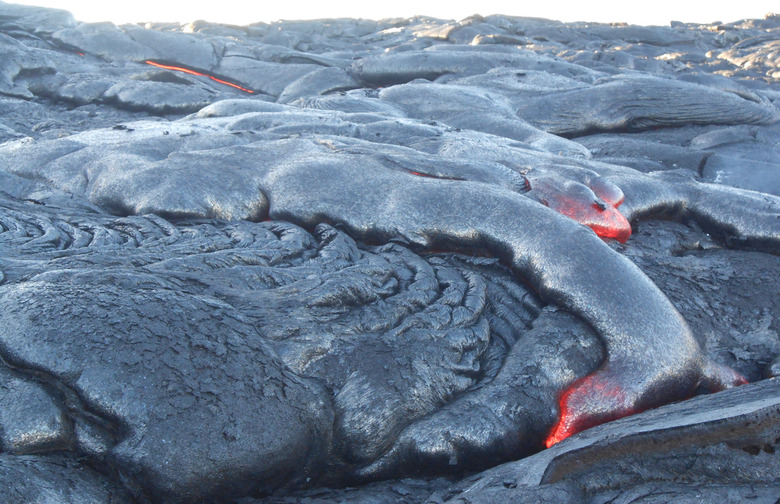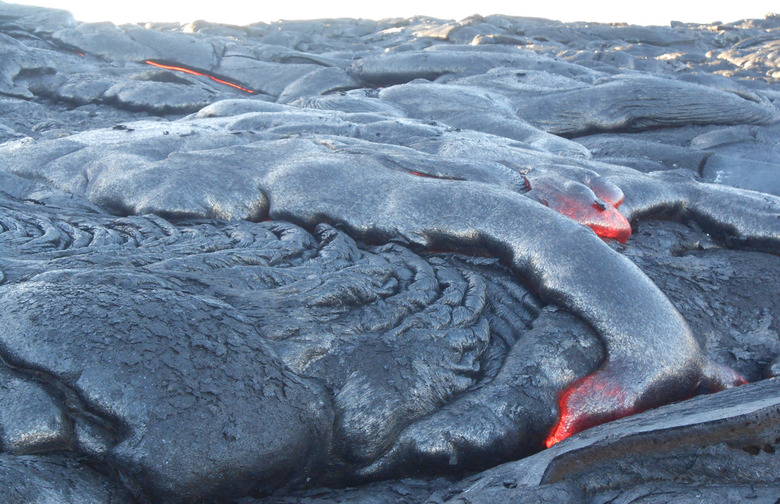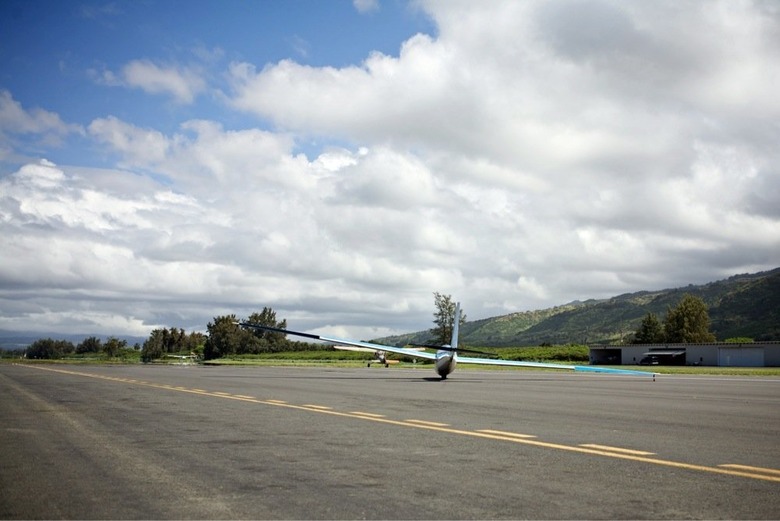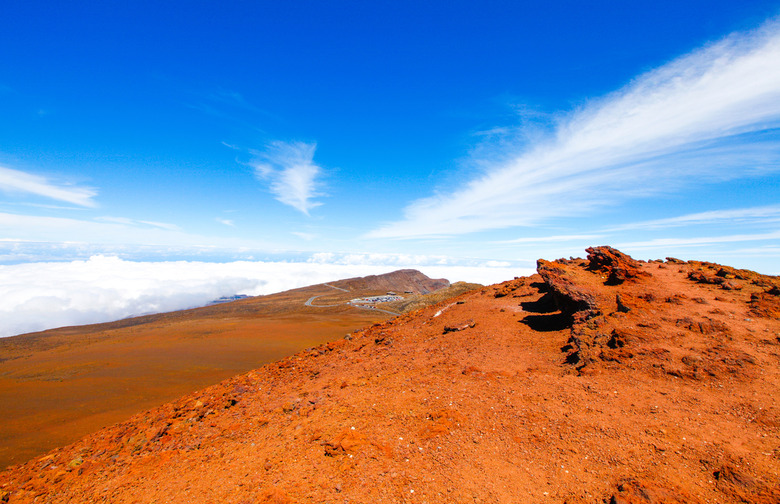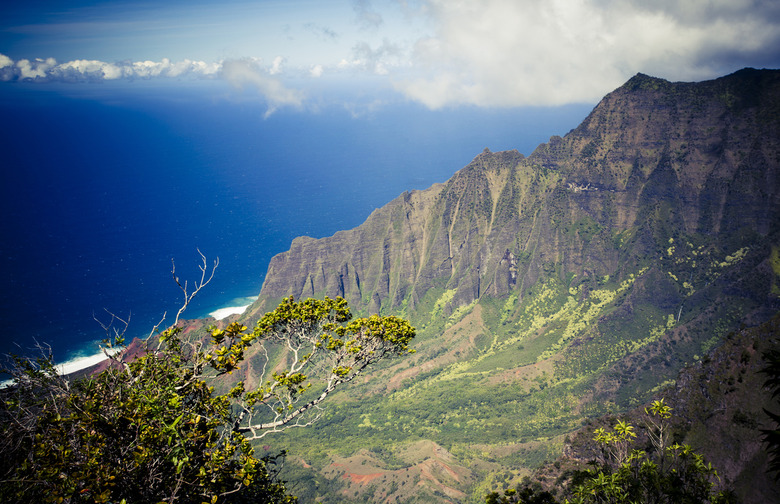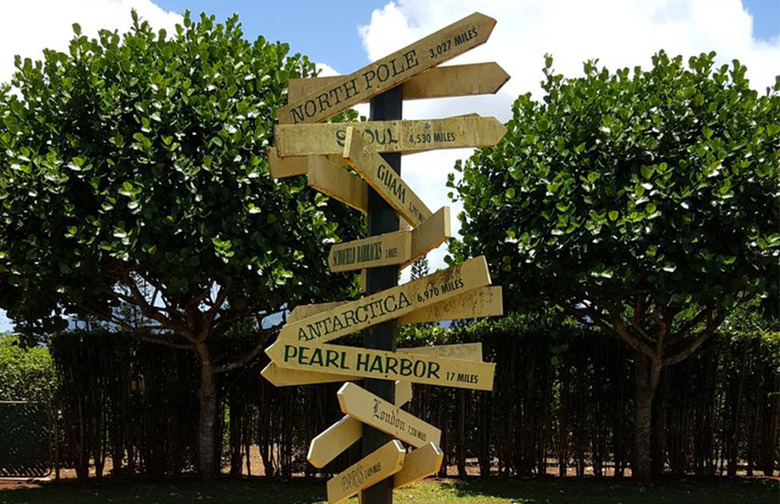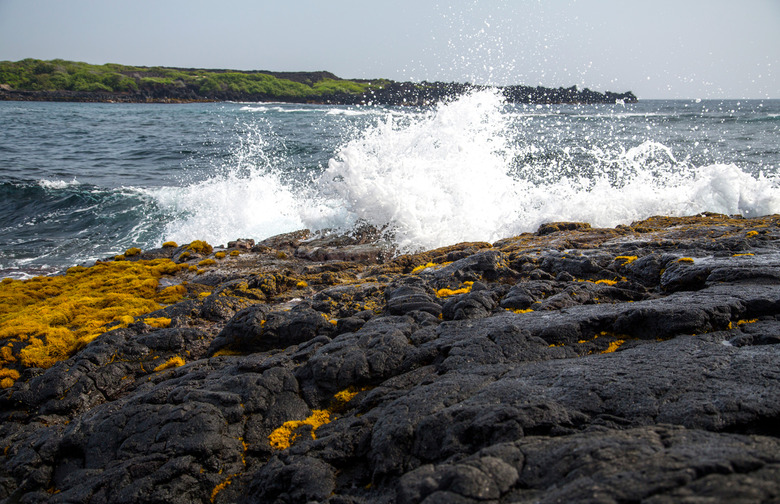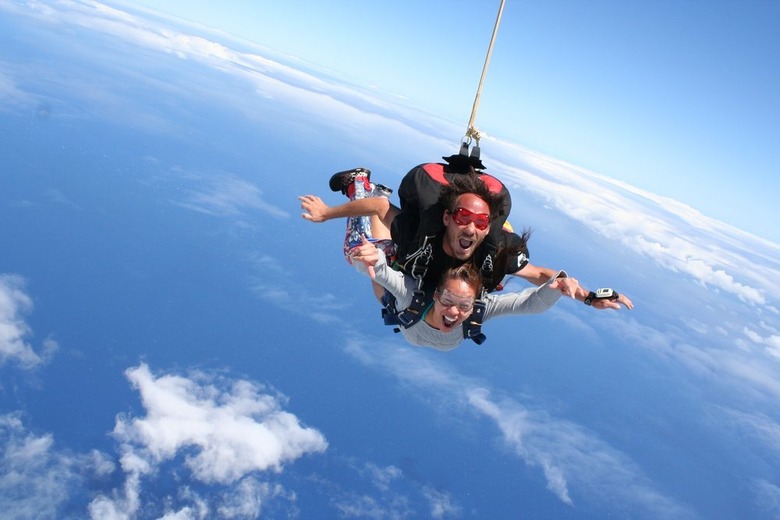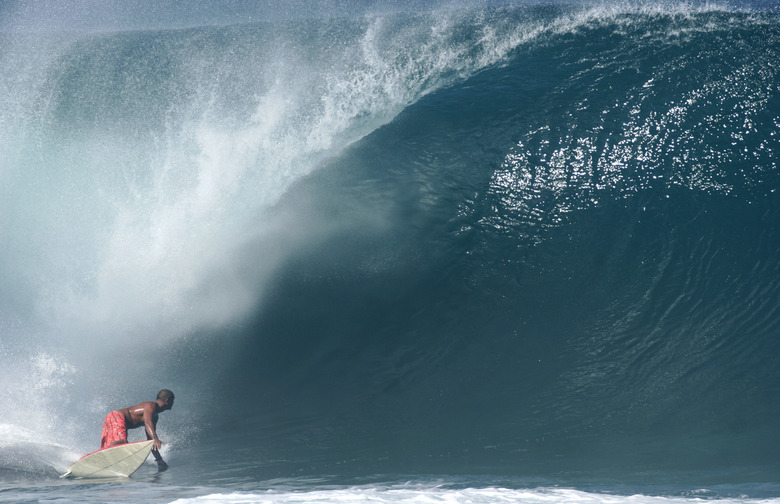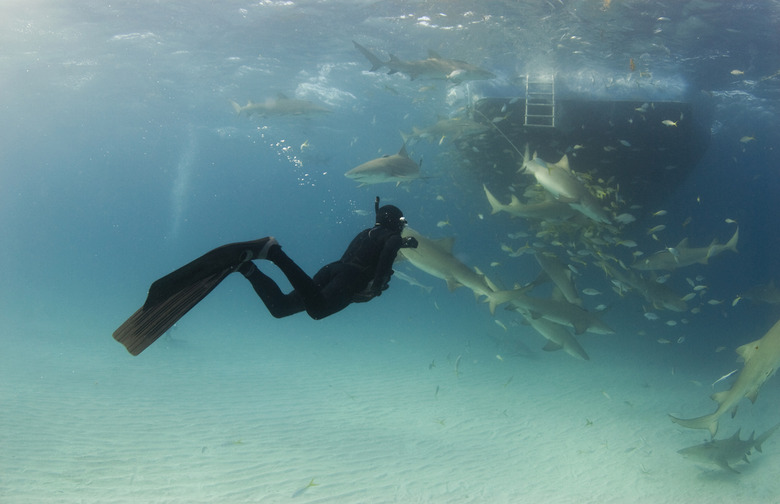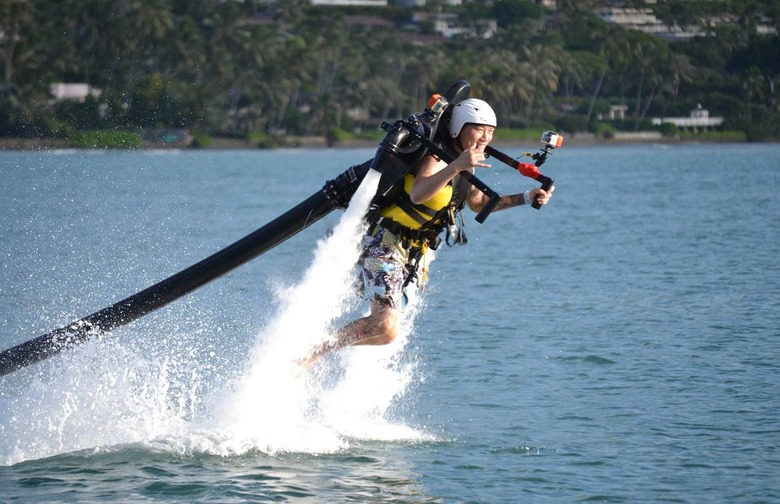The 10 Craziest Things You Should Do On Your Next Trip To Hawaii (Slideshow)
Get Up Close and Personal With Lava
The Big Island of Hawaii is home to five volcanoes, and two of them — Mauna Loa and Kilauea — are protected by Hawai'i Volcanoes National Park. Although still active, the pair generally have non-violent eruptions, with the former last erupting in 1984 and the latter currently erupting, which it has been doing since 1983. Although it might sound dangerous, park visitors can actually get surprisingly close to the action, but are urged to use caution, stay on marked trails, and not hike after dark (all of which would be a bit too crazy). For a saner alternative, visitors can enjoy views from the Jaggar Museum's enclosed room overlooking the Kilauea Caldera or witness active lava flows while taking a drive (if the conditions permit) along the Chain of Craters. Eyes on the road, though!
Glide Through the Skies
Even if you've ridden in a small plane or helicopter before, taking a glider trip is a totally different experience. For one thing, gliders don't have engines. Instead, you'll be released along the rugged cliffs of the Waianae Mountains to take in panoramic views of the North Shore and Waimea Bay as your commercially rated, FAA-certified pilot takes you on a 20-minute flight at altitudes of 3,000 feet or more. Prices start at $100 through Honolulu Soaring.
Hike the Haleakala Crater
If you only do one thing on the island of Maui, it should absolutely be a trip to see the famous Haleakala Crater in Haleakala National Park. But first, a science lesson: Unlike most craters formed by volcanic activity, Haleakala was actually shaped over eons as the result of erosion of the entire volcanic mountaintop. When the smaller lava flows back-filled the eroding valley, this built the floor of the crater, which is why it is officially called the "Haleakala National Park Summit Area" instead. For the best experience, wake up extremely early (about 3 a.m. local time) and make the drive (or take a bus tour) all the way up to the 10,000-foot-high summit, where you can view the sun rising in the distance while looking down at the crater through the clouds. If waking up at 3 a.m. to go hiking doesn't seem crazy to you, then you're one of those deranged individuals known as a "morning person."
Hike the Na Pali Coast, Kauai
There's no shortage of hiking trails in Hawaii, but none is better than the 22-mile (roundtrip) Kalalau Trail that cuts through the famed Na Pali Coast in Kauai's Na Pali Coast State Park. However, it's not for everyone. Originally built in the mid-1880s, the trail has switchbacks, sheer drop-offs, and cliff-hugging turns through five valleys before reaching the golden sands of Kalalau Beach. Hikers often pitch tents under the jungle canopy and go for a dip in the ocean or under the beachside waterfall in order to experience all nature has to offer. To give you an idea of how enjoyable this area can be, the state only permits visitors to stay in the park for a maximum of five days — yet some park-goers still have trouble leaving within this timeframe.
Lose Yourself
Few activities combine fun and frustration like trekking through a giant maze — especially when it's the largest plant maze in the world. The Pineapple Garden Maze at the Dole Plantation features more than 14,000 plants and takes visitors about an hour to complete, but has been defeated in as little as seven minutes. On the other hand, we're fairly certain some poor souls just quit mid-maze and decided to spend the rest of their lives inside. Tickets are just $7 for adults, $5 for children.
See Some of the Weirdest Beaches Ever
In this case, it's not the action or activity that's crazy, but what you'll witness. We've all seen white or tan sand beaches, but Hawaii has some truly unique varieties. Punalu'u Beach on Hawaii's Big Island has black sand made of basalt that forms when superhot magma reaches the ocean and the sudden, rapid cooling causes the rocks to explode into tiny particles. Not impressed? How about the Big Island's Papakolea Beach, which has spectacular cliffs, beautiful water, and green sand? Although solely accessible via a long hike, this location is the only beach in the United States with green sand (which is made of olivine), and one of only four in the world. Or you could try Glass Beach in Kauai, which, as the name suggests, is covered in a countless number of brown, aqua, clear, and blue sea glass pebbles. If these options aren't crazy enough, then you might as well just go to the Big Island's Kamilo Beach, which is completely covered in trash. Loads and loads of trash. Satisfied?
Hate people? Click here for a list of the nine best beaches in America for avoiding crowds.
Skydive on the North Shore
Although skydiving can be done almost anywhere, that doesn't make it any less crazy. (It still involves plummeting 10,000 feet while handing your life over to a giant piece of MC Hammer's pants.) But if you're up for falling down, stop by the Pacific Skydiving Center on the North Shore of Oahu and make the leap! The company's professional instructors will have your back (they're literally strapped to it) as you descend 7,000–14,000 feet at free falls of up to 120 mph. I'm getting vertigo just writing about it.
Surf the Banzai Pipeline
There are plenty of good surf spots around the Hawaiian islands for tourists, locals, experts, and beginners — but none more iconic than the Banzai Pipeline on Oahu's North Shore. The ginormous waves there break in shallow water just above a sharp and cavernous reef, turning the waves into large, hollow, thick curls of water that make for perfect surfing. Perfect, yet very dangerous. Numerous folks — including pro surfers — have fallen victim to the deadly tides there, so you might want to consider sticking to spectating.
Swim With Sharks
The waters around Hawaii are home to gray reef sharks, Galapagos sharks, sandbar sharks, tiger sharks, and hammerheads, so why not dive in and check them out? But instead of going in unprepared and unprotected, visit North Shore Shark Adventures to enter the company's secure shark cage and be lowered into the creatures' natural habitat yet still out of harm's way. The price is about $100, and NSSA guarantees you'll see sharks. If you're not keen to take a dip, the company also offers "observer" rates for $75, which allows guests to stay on the boat and learn about sharks while they swim by.
Take Flight on a Jet Pack or Flyboard
You might not be able to zip around like James Bond or The Rocketeer, but jet packs do exist, and you can try them out in Hawaii at H20 Sports Hawaii. These water-powered packs will propel riders up to 30 feet in the air, and even first-time flyers are typically airborne within five or 10 minutes. Don't worry about falling, as you'll be safely located over the beautiful blue waters of the bay between Diamond Head and Koko Head. Introductory lessons cost about $200.
Additionally, thrill-seekers can opt for a ride on a Flyboard, which is similar to the jet pack experience, except you stand on a board instead of strapping the jets to your back. This also costs about $200 via X-Treme Parasail.
